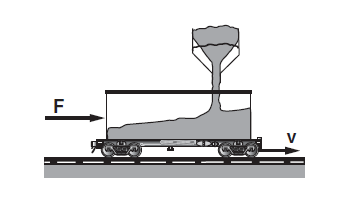In the context of Newtonian mechanics, is it possible to have an isolated system which does not lose/gain particles, but whose mass changes over time? I have been trying to think of such an example for a while, but have been unable to come up with one.
I understand that this phenomenon is common in special relativity, but, as I have been told, Newton did not postulate mass invariance for Newtonian mechanics either. The question is also somewhat related to Newton's formulation of the second principle,
$$\overrightarrow{F}=\frac{\overrightarrow{dp}}{dt}$$
which, given that the system referred to does not lose/gain particles, could also be written as
$$\overrightarrow{F}=m\frac{\overrightarrow{dv}}{dt} + \frac{dm}{dt}\overrightarrow{v}$$
However, I have never seen an example outside of relativity where this formula is used. Is there any such example in Newtonian mechanics?

